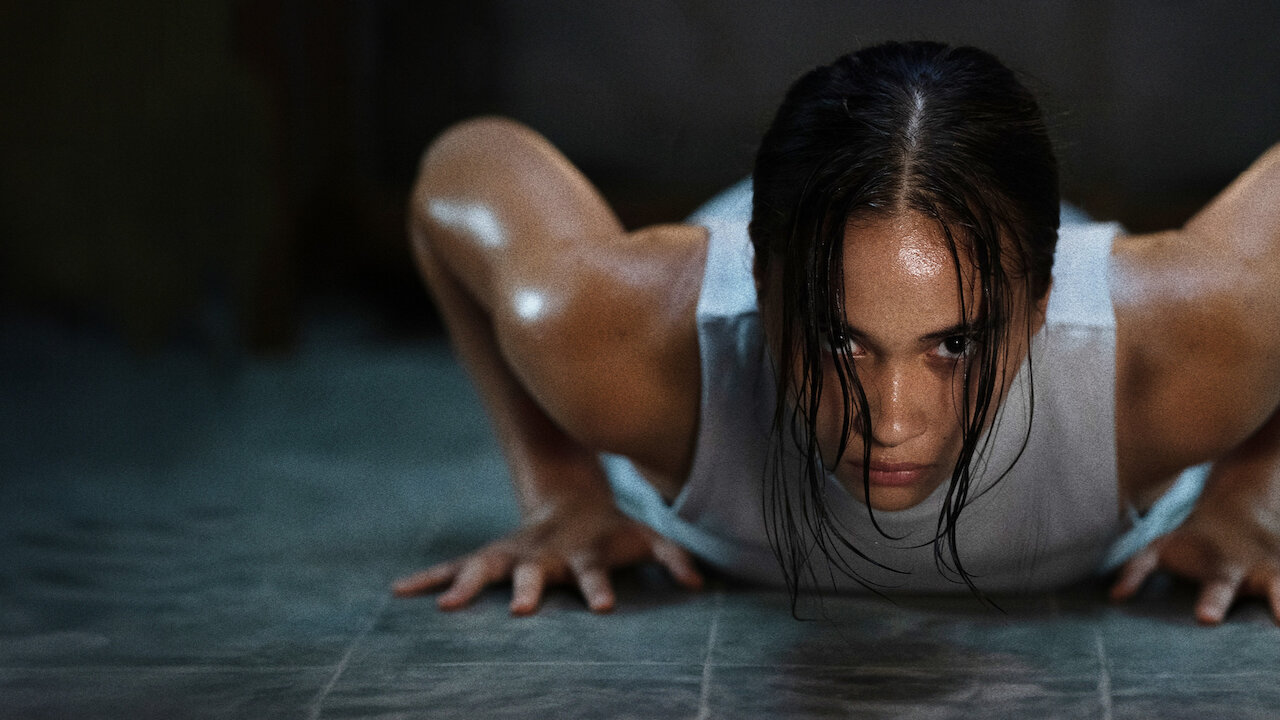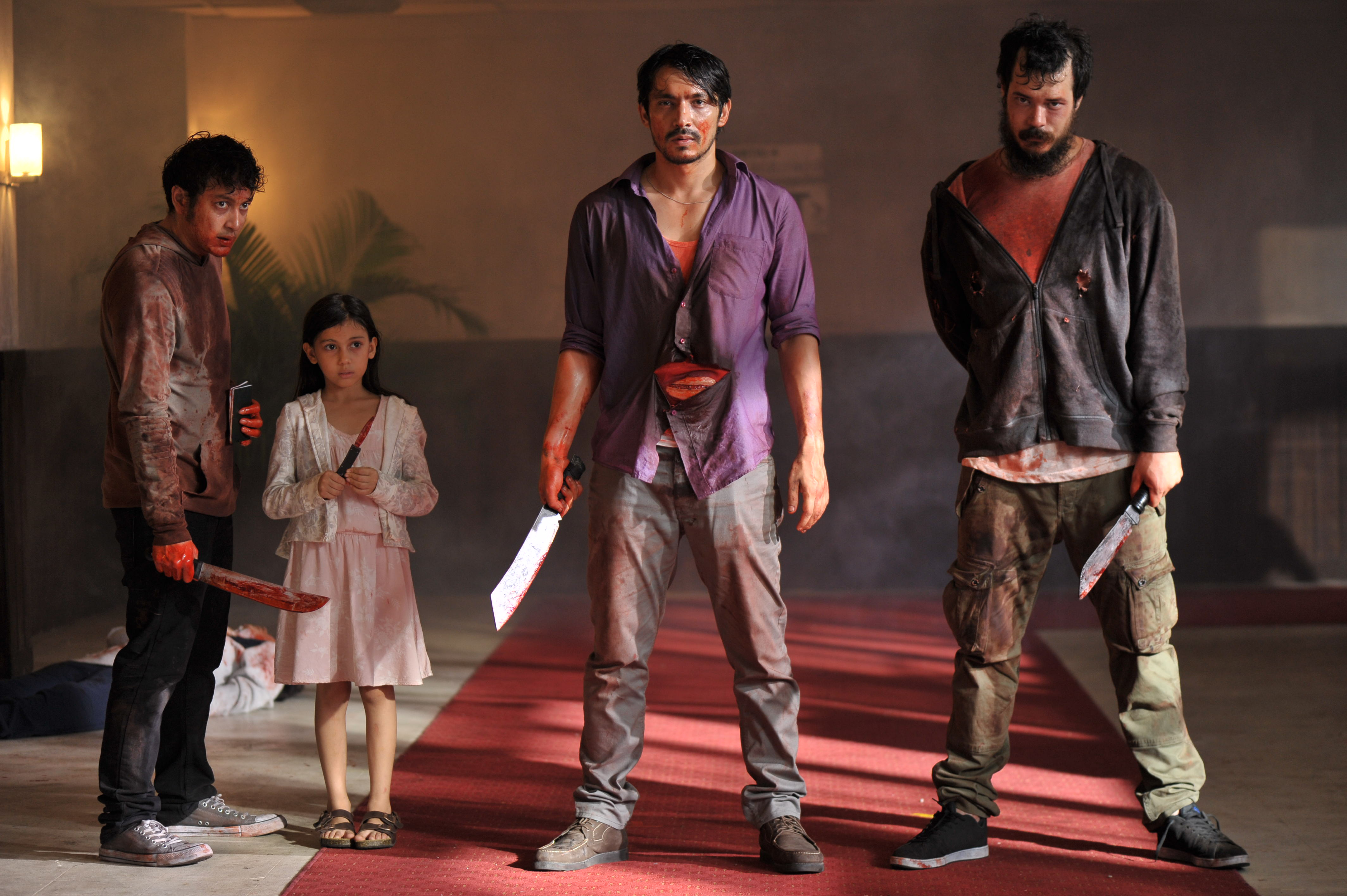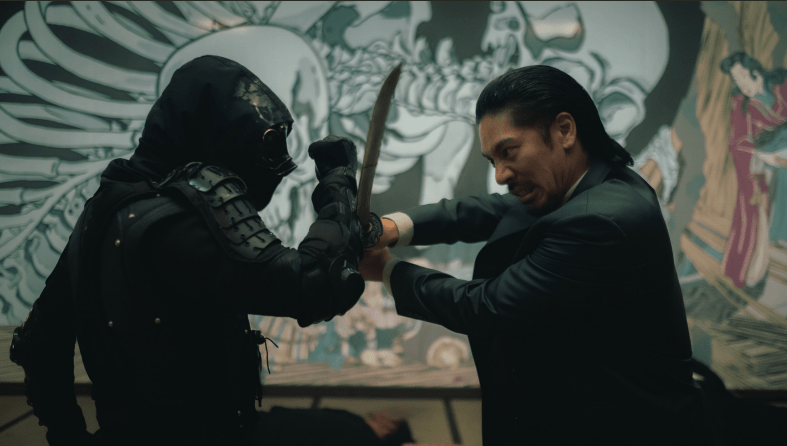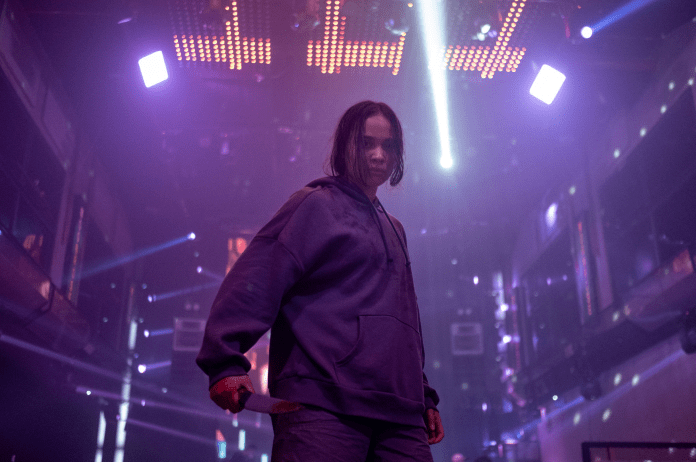With his blood-soaked tales of violence and vengeance like The Night Comes for Us and Headshot, Timo Tjahjanto earned a reputation as one of the world’s goriest action directors. But he doesn’t see himself that way.
Tjahjanto began his filmmaking career making slasher movies as half of the Mo brothers, teaming up with his longtime friend Kimo Stamboel. Since the end of their formal partnership, the Mo brothers have largely worked on their own projects, with Stamboel working in the horror genre and Tjahjanto primarily (but not exclusively) making violent action movies.
Tjahjanto took the action world by storm with 2018’s The Night Comes for Us, a brutal thriller led by two of Indonesian cinema’s foremost martial arts stars, Iko Uwais and Joe Taslim. The movie occasionally gets labeled as “action horror,” in spite of its fairly conventional crime-thriller narrative, because of how unflinchingly Tjahjanto depicts extreme, bone-breaking, blood-soaked violence. The stylish, carnage-filled fight sequences left a mark on action cinema other directors are still scrambling to match.
His new movie, The Shadow Strays, premiered at the Toronto International Film Festival in September, and finally dropped on Netflix on Oct. 17. It follows a teenage soldier who is being trained as a member of an elite group of top-secret assassins called the Shadows. When a mission goes wrong, she’s sidelined by the Shadows and gets entangled in a dispute between her young neighbor and local gangsters. Like most Tjahjanto projects, the film features several decapitations and “gallons” of blood. (The director estimated 85% of the blood was practical — like many splatter fans, the man loves squibs.) It’s also one of 2024’s best action movies.
But Tjahjanto doesn’t consider himself a particularly gory filmmaker — he sees his movies as a way to be honest about real-world consequences of violence. A self-described “indulgent” filmmaker, Tjahjanto — wearing a Nine Inch Nails shirt and feeling “exhausted and relieved” after recently wrapping filming on the upcoming Nobody 2 — spoke with Polygon about his approach to gore in action, his cinematic influences, and sticking with practical blood when the rest of the industry is moving to CG effects.
This interview has been edited for concision and clarity.
Polygon: I think of you as one of the gorier action directors working today. Do you see yourself that way?
Timo Tjahjanto: I don’t know. I don’t really think so. Granted, I haven’t seen them — not because I don’t want to see them, but just because of the timing of it all and the accessibility of it all — but I’ve heard there are films like Kill and Project Wolf Hunting that seem to be doing quite OK in that department. From what little clips I’ve seen, they seem to be way bloodier.
I think there was a phase in my life — when I just started as a filmmaker, I did this little film with Kimo [Stamboel], my friend. It’s called Macabre, one of the first Indonesian slasher films. And I think at the time, our goal was like, Let’s be the goriest Indonesian flick ever. But weirdly, after The Night Comes for Us and everything, I just don’t feel like I was necessarily aiming for gore. I think it’s just that there needs to be a certain, weirdly enough, respect to violence and what it can do to the human body. I feel like we have to, in some way, hold ourselves accountable as filmmakers to show just how traumatizing violence can be.
We live in a violent world. If you see what’s on the internet, what’s on formerly known as Twitter, X, just the accessibility of violent content — people from a lot of parts of America, for example, there’s a lot of people getting riled up and start beating each other up for nothing. Not that I’m saying America is the only violent place. I think the world generally has become a much more violent place, or much more exposed to the media. It’s weird when people see my films like, Holy shit, that’s so gory and violent! I’m like, Man, have you seen the real world? It’s so fucking crazy out there that I feel like sometimes my film is a PG version of it.
I’m glad you brought up the respect for violence, because one of the reasons I’m drawn to your approach to gore in action is because it feels more honest. If you’re not showing that level of destruction, you’re sanitizing the violence, and not being honest with the viewer about the actual effects of what’s happening.
That’s what I always try to do. I think the human body is weirdly fragile and resilient at the same time. If any of your bones have been broken, or if you’ve ever had a deep cut, it’s so weird how biology reacts to it all.
But beyond that, gore can also add stakes to a scene, it can add excitement, it can add humor. How do you balance those elements?
Well, that’s the thing. I think at a certain level, violence has to become funny. And I learned this from, or I copied this from, the great Takashi Miike. I think he’s always walking that line, realizing that the world is a crazy, fucked-up place, and one way you can deal with it is by using a lot of humor. If you watch something like Ichi the Killer, for example, that thing is dark, man. In Takashi Miike’s world, everything is fair and square. Women, men, we are both capable of violence, and we are both capable of being the victim. And I try to do that in my films.
One example I think is interesting is The Big 4, which has a tonal difference from your other movies.
Well, I think just because it’s gory doesn’t necessarily mean it has to be a feel-bad movie. I think that works quite well. Bad Boys can be a feel-good experience, and it has its moments of violence. And gore, especially if you’re talking about Bad Boys II — Michael Bay really pushes the limit to what kinetic violence can be. And I always feel like, you can make a less violent film and it becomes a much gloomier film, but you can also make a much more splattery and “head getting blown off by a shotgun” movie, and it still in the end has a heartwarming quality to it. Look at Shaun of the Dead, one of my favorites. And that thing is the ultimate feel-good film… depending on how you look at it.
You brought up Macabre earlier. Do you think your horror roots have an impact in terms of your perception of gore in action?
Kind of, yes. But having said that, I think it’s also childishness. Look, part of the beauty in horror is, you don’t necessarily need to be gory in terms of the approach to thrills. And as much as I would love to say, “Oh, I’m very well-versed in horror,” I think right now I’m only well-versed in a specific type of horror, which is one that is often violent. I think a lot of that comes from me growing up on Friday the 13th and Texas Chain Saw Massacre. Texas Chain Saw Massacre has such a huge impact on me in terms of how I look at violence, which is relentless.
I probably watch it maybe once or twice a year. It never ceases to amaze me. When you’re in your teens and you watch it, you think it’s the bloodiest film ever. And then when you watch it again after you’ve grown up, there’s hardly any blood in it. It is pure terror and it’s pure viscerality without actually showing you anything. And there lies the genius of Tobe Hooper making this film. So yeah, I’m just a little bit less disciplined than people like Tobe Hooper.
I loved what you had to say to some critics of The Shadow Strays about how filmmaking is an indulgent act, and I really appreciate that you see it that way, that making art is something that you do for yourself, and the hope is that other people are on board with you.
I think that’s the thing. I don’t mean that to attack a critique: I think when I saw the critique, I was like, Oh, well, I agree with a lot of it. I think honestly, I’m the kind of filmmaker who always goes for character first and plotting later. So that’s why my plots tend to be simplistic. And I do admit that I feel, well, most stories have been told. For me, it’s better to rely on the humanity of the characters and hope that the audience can hold onto that.
But when people say, “Hey, too much self-indulgence can be too much of a good thing,” I feel like, Well, no. Because here I am given enough freedom, thankfully, by Netflix to do almost everything that I want to do, and I think I have to sort of indulge in it rather than restrain myself, even though I am still restraining myself. If I went full indulgence, I think you’d see a lot of kinkier shit in it, and all these sick sort of violent images that I have. I always feel like, a movie-watching experience, you have to be able to give everything you’ve got to the audience. It’s not like a series, it’s not like The Boys, where you might fail in the first episode or second episode, but you can make it up in the eighth episode.
I just feel like, Well, I have this many hours, and I just want to give my audience the shit that they want. Look at RRR — that film is self-indulgent as fuck, and it’s one of the best films ever made in the world. I just feel there’s a time for self-restraint, but action is one of those genres where you just need to keep on pulling the trigger. Someday I’ll be a better writer and I’ll probably do better plotting, but for now, I’m still learning.
The depiction of blood and gore has changed over time, with new technology leading a lot of productions to move away from practical blood and squibs and over to VFX blood. What’s your philosophy on that?
It’s weird. I saw that there was a critique [of The Shadow Strays] that says, Oh, the use of CGI blood. Weirdly, Shadow Strays is like 85% practical blood. I think that it’s just because of the technology that I use, which is a lot of blood tubing and all that stuff. It does look excessive to the point that you think it’s actually CGI. I pride myself in taking a lot of time for The Shadow Strays. Things can get long in the shooting process, just because placing all those squibs and blood tubes takes time.
That’s what I always hear, is how much it expands the budget and your time just from cleaning up between takes.
Exactly. And costumes, and all those little things. Fortunately, making films in Indonesia, I can sort of afford it. So I actually indulge the fuck out of making all those things. Watching The Shadow Strays so many times through editing, I had the suspicion people are going to think this is actually CGI blood, even though it’s actually meticulous condom use and timed blood tubes and all that stuff. I’m a proponent of using as many squibs as possible. I know that’s cumbersome. But actors react better to it. They react, they feel the pain. They feel like, Oh shit, blood’s really spurting out of me. And that always helps.
There are some enhancements, just because sometimes the blood doesn’t redirect the way it should. But man, we were having fun. There were always gallons of blood behind the camera where we pump it up there. Especially for the first sequence — that whole Japanese sequence is me being inspired by Takeshi Kitano’s Zatoichi, but he was using CGI blood. I was thinking, I want to be like Kitano, when he just completely goes batshit with blood, but I’m going to try to use practical blood tubes. So that’s what we did, man.
You’ve mentioned Kitano, you’ve mentioned Miike, you’ve mentioned Tobe Hooper. Are there any other big figures for you when it comes to depicting violence on screen and their use of gore?
Martin Scorsese. When he’s shooting violence, it’s almost like he sometimes reverts back to being a young filmmaker. And I think he always has that spirit of being a young filmmaker. That’s the beauty of him. He can be 89 and he still shoots like a 35-year-old Sam Peckinpah on coke and LSD. One of the best violent scenes that I think is often overlooked is actually in The Departed, when Jack Nicholson and Ray Winstone got ambushed. Just like this fucking crash zoom lands and [there’s] fucking blood and [mimics the blood spraying everywhere] and all that shit. And I was like, Man, that’s fucking beautiful! I want to steal that shit. But I still don’t have enough skill to do it. Someday!
Do you have a favorite spot of gore in The Shadow Strays?
Aurora [Ribero], who plays 13, I always said to her, “You are skilled, but you are also clumsy. That’s the whole point of your character. You have a lot of endurance because you are young,” as she is truly in real life, “but you are often clumsy in your fighting. But once we hand you a sharp-edge weapon, you go berserk.” Whenever she’s given any weapon of sharp edge, be it a kitchen knife, be it a fucking screwdriver, she just goes crazy. I always loved that.
By the end of shooting, she became so good at it. It’s so fucking cool. She never had any martial arts experience, and whenever she does the stabbing, it’s almost like somebody who’s been living in prison for 30 years and is a master shanker. She’s so good. And there’s a whole sequence later in the film, when she fights a certain somebody and she just uses a screwdriver to go crazy — I think that’s one of my favorites, just because of how ridiculous it looked with the blood and everything, and just how well it makes sense, because at this point she doesn’t have anything to lose. She’s just going crazy, and I love that.
The Shadow Strays is on Netflix now.





